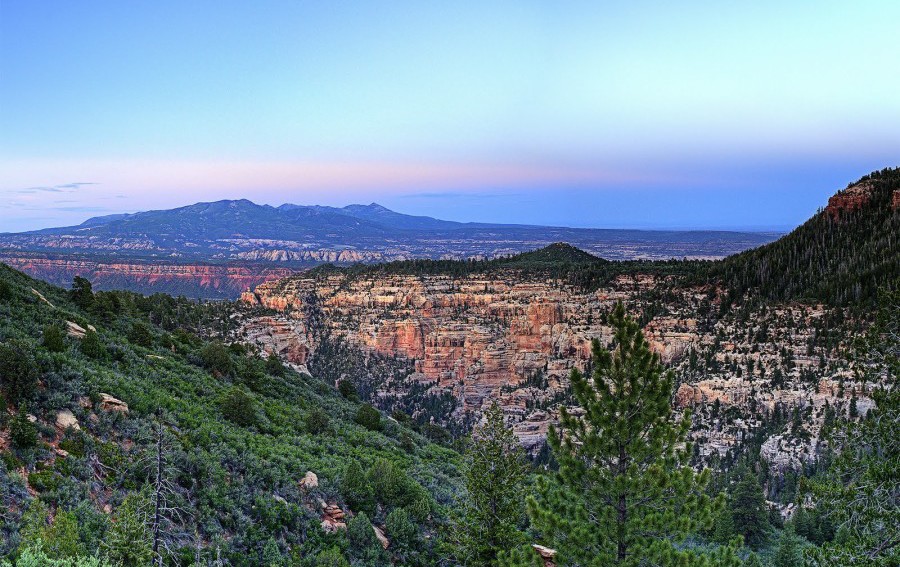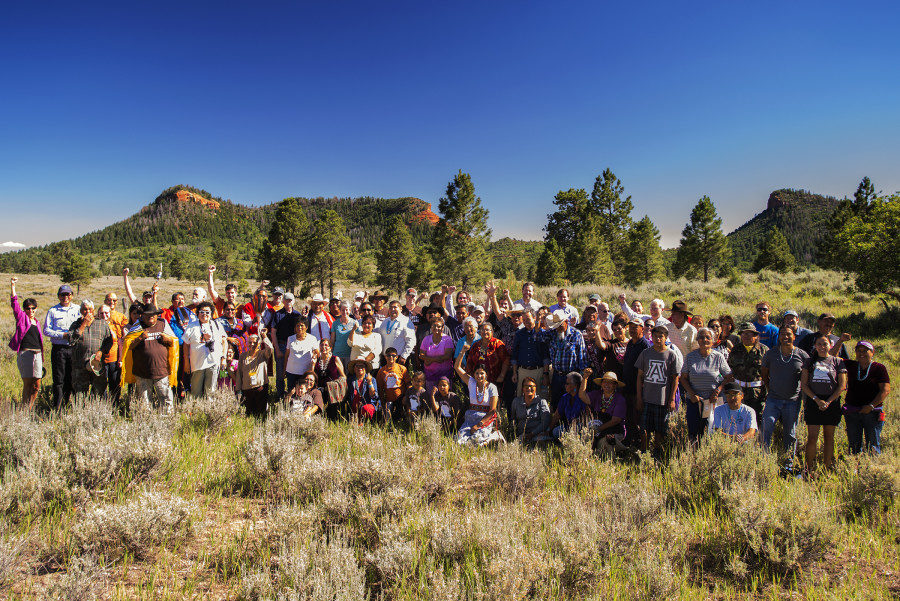by Willie Grayeyes, Utah Diné Bikéyah Board Chairman

Gazing out across the Bears Ears landscape of southeastern Utah, every person sees the sandstone mesas and pinyon-juniper woodlands a little differently. Outdoor enthusiasts see world-class climbing, hiking, canyoneering and mountain biking. Local ranchers see abundant year-round forage for cattle and healthy landscapes to sustain future generations. Archaeologists see some of the most intact artifacts and best-preserved cliff dwellings in the world.
As Native Americans who have inhabited the Bears Ears region since time immemorial, we see a landscape still occupied by the spirits of our ancestors. We see a landscape layered with stories, songs, and prayers passed down generation to generation. We see our past and our future within the plants, animals, and ceremonies that are tied to this landscape, just as we are tied to this landscape like a child to its mother.
That attachment – and the vision of healing that connection between people and the Earth – has driven the historic initiative to protect the two-million-acre Bears Ears cultural landscape. An unprecedented coalition of Native American Tribes is calling on President Obama to protect Bears Ears now as a national monument. Under the 1906 Antiquities Act, the President has the power to protect this invaluable area from ongoing threats of looting, vandalism, and mineral extraction. The tribally-led vision of Bears Ears National Monument has drawn the support of a diverse array of individuals and organizations locally and across the United States, including the Conservation Alliance, outdoor recreationalists, as well as thousands of grassroots Native American people who live adjacent to the proposed Bears Ears National Monument. We thank you for your support!
Evolution of the Bears Ears Proposal
Utah Diné Bikéyah, the Native-led conservation nonprofit for which I serve as Board Chairman, has been a catalyzing force in the Bears Ears initiative. Our organization’s name (pronounced di-nay bi-kay-uh) means “sacred land of the people” in the Navajo language, and our Board of Directors is comprised exclusively of grassroots Native American leaders and traditionalists. For half a dozen years, UDB has been actively asserting our Native voice in public lands management in southeast Utah. We work to represent the interests of grassroots Native Americans who make up the majority population in Utah’s largest county, within which the Bears Ears cultural landscape lies. Starting in 2010, UDB Board and staff initiated the stakeholder engagement process that was eventually picked up and sponsored by Utah’s congressional representatives. Utah political leaders sought to sculpt a legislative solution for the future of Utah public lands that would appease all parties. Unfortunately, the legislative process failed to sufficiently respond to Native American requests or honor our deep connection to these lands. Our voices were not listened to.
And so, in 2015, UDB asked for the help of five sovereign Tribes – Navajo, Ute Mountain Ute, Hopi, Zuni, and Uintah Ouray Ute – to lead the effort to protect Bears Ears. The five Tribes formed the Bears Ears Inter-Tribal Coalition, an unprecedented Coalition of sovereign tribal nations that has been working in a government-to-government relationship with the Obama Administration over the past year to secure protections for this two million acre cultural landscape. The proposed Bears Ears National Monument marks the first time in history that Tribes have asked a President of the United States to designate a national monument in honor of Native American heritage. As outlined in the Tribes’ proposal, Bears Ears National Monument would also be the strongest collaborative management model ever implemented, with Tribes sharing equal status with federal agencies in overseeing and managing our ancestral homelands.
Recreation as Part of Healing
UDB and the Coalition are also collaborating with conservationists and recreationalists who care deeply about the future of the Bears Ears region. Bears Ears is a revered destination for activities like rock climbing, camping, backpacking, and river rafting, and UDB sees these activities as a form of healing. Native and non-Native people alike enjoy recreational activities as well as the experience of simply being out in a remote, wild and ecologically intact landscape. Two million acres is a modest request in a world where such places have become all too rare. We understand that these lands provide psychological and spiritual sustenance for all of us.
That is why UDB and the Bears Ears Inter-Tribal Coalition are working closely with recreation advocacy organizations to ensure that world-class climbing routes will remain open and accessible. After all, the Ancestral Puebloans who lived here long ago were clearly incredible climbers, constructing sophisticated cliff dwellings in unlikely alcoves and hard-to-reach ledges that can still be visited today. The proposal recommends that all respectful recreational uses continue within the Bears Ears landscape.
Utah Diné Bikéyah and Tribes appreciated the formal endorsement of the Bears Ears National Monument proposal by the Access Fund, the Outdoor Industry Association, and the Outdoor Alliance on July 29. Public articulation of support for Bears Ears National Monument by over a dozen leading outdoor companies including Black Diamond, Patagonia, and The North Face on August 4 further reinforced that cultural preservation and recreational access can and will co-exist in a future Bears Ears National Monument.
Seeing the New Route Forward
When we look out across Bears Ears, what we see reflects what we each value about this unique landscape. With Bears Ears National Monument, Tribes are proposing to honor and protect the many ways of using and relating to this region that sustain this cultural landscape and the people – all the people – who treasure Bears Ears.
Come, stand here beside us. Can you see what we see? Together we will share a unified vision for Bears Ears National Monument and lead a new route in American history.
___
What You Can Do
Sign the petition asking President Obama to designate Bears Ears National Monument: www.utahdinebikeyah.org/petition
Also learn more about the history of the tribally-led proposal, subscribe to Utah Dine Bikeyah’s e-newsletter, and show your support with great Protect Bears Ears gear! www.utahdinebikeyah.org


